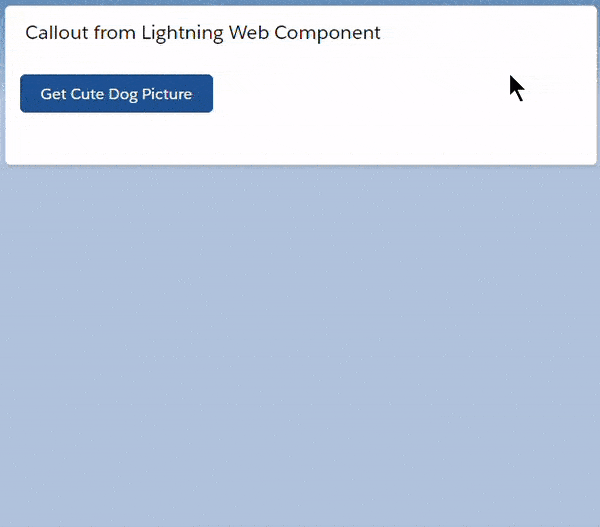There are a few steps to take before you can use your custom Lightning web components to create a Lightning page in Lightning App Builder. The Lightning App Builder is a point-and-click tool that makes it easy to create custom pages for the Salesforce mobile app and Lightning Experience, giving your users what they need all in one place. Extend LightningElement to create a JavaScript class for a Lightning web component. The export default keywords export a MyComponent class for other components to use. JavaScript files in Lightning web components are ES6 modules. By default, everything declared in a module is local—it's scoped to the module. The JavaScript class can contain. Sunday With Lightning Episode 7 #Lightning #Web #Component #Slot #Events Topics covered:- 1. Handling multiple child Components in Parent LWC 2. A searchable/sortable table of all the material spell components for Dungeons & Dragons 5e and the spells they correspond with.
28By Ankush Dureja in salesforceMay 28, 2020
lightning-card LWC (Lightning Web Component)

lightning-card LWC (Lightning Web Component)
A lightning-card is used to apply a stylized container around a grouping of information. The information could be a single item or a group of items such as a related list.
Use the variant or class attributes to customize the styling.
A lightning-card contains a title, body, and footer. To style the card body, use the Lightning Design System helper classes.
When applying Lightning Design System classes or icons, check that they are available in the Lightning Design System release tied to your org. The latest Lightning Design System resources become available only when the new release is available in your org.
lightning-card LWC Example
We will create LWC component using lightning-card. We will get the following output
lightningCardLWC.js
lightningCardLWC.js
lightningCardLWC.js-meta.xml
Now we can add this lwc component on home page.
- Go to Home page
- Click Setup (Gear Icon) and select Edit Page.
- Under Custom Components, find your lightningCardLWC component and drag it on page.
- Click Save and activate.
Usage Considerations

lightning-card LWC (Lightning Web Component)
lightning-card LWC (Lightning Web Component)
A lightning-card is used to apply a stylized container around a grouping of information. The information could be a single item or a group of items such as a related list.
Use the variant or class attributes to customize the styling.
A lightning-card contains a title, body, and footer. To style the card body, use the Lightning Design System helper classes.
When applying Lightning Design System classes or icons, check that they are available in the Lightning Design System release tied to your org. The latest Lightning Design System resources become available only when the new release is available in your org.
lightning-card LWC Example
We will create LWC component using lightning-card. We will get the following output
lightningCardLWC.js
lightningCardLWC.js
lightningCardLWC.js-meta.xml
Now we can add this lwc component on home page.
- Go to Home page
- Click Setup (Gear Icon) and select Edit Page.
- Under Custom Components, find your lightningCardLWC component and drag it on page.
- Click Save and activate.
Usage Considerations
Icons are not available in Lightning Out, but they are available in Lightning Components for Visualforce and other experiences.
title is available as an attribute or a slot. Pass in the title as a slot if you want to pass in additional markup, such as making the title bold. Or use the title attribute if your title does not need extra formatting. Setting the title attribute overwrites the title slot.
There is one more practical example of using lightning-card, please refer to Lightning Spinner in LWC
For more details please refer to official link
For LWC lightning-card example please refer to this link
lightning component, lwc, salesforce, sfdcLightning Web Components Slots Games
Ankush Dureja
Lightning Web Components Slots No Deposit
Permanent link to this article: https://www.sfdcpoint.com/salesforce/lightning-card-lwc/LWC has different lifecycle hooks which are essentially are callback methods triggered at a specific phase of a component instance's lifecycle.
We are interested in the render() callback method to update the UI conditionally. Render() can be called before or after connectedCallback(). Though it is rare to call the render() in a component it's main use case is to conditionally render a valid HTML template based on business logic. Tutto sto casino.
For example, imagine that you have a component that can be rendered in two different ways but you don't want to mix the HTML in one file. Create multiple HTML files in the component bundle. Import them both and add a condition in the render() method to return the correct template depending on the component's state.
Following the lines of code splitting used in some JavaScript frameworks, one can import multiple HTML templates and write business logic that renders them conditionally. Create multiple HTML files one for web and one for mobile in the component bundle. Import them all and add a condition in the render() method to return the correct template depending on the device the component is accessed. The returned value from the render() method must be a template reference, which is the imported default export from an HTML file.
To reference CSS from an extra template, the CSS filename must match the filename of the extra template. For example, insidersMobileTemplate.html can reference CSS only from insidersMobileTemplate.css. It can't reference CSS from insidersMultipleTemplates.css or insidersWebTemplate.css.
We can also use an if:true-false directive to render nested templates conditionally instead.
Once we deploy the LWC components you can see the dynamic behavior based on the screen size.

